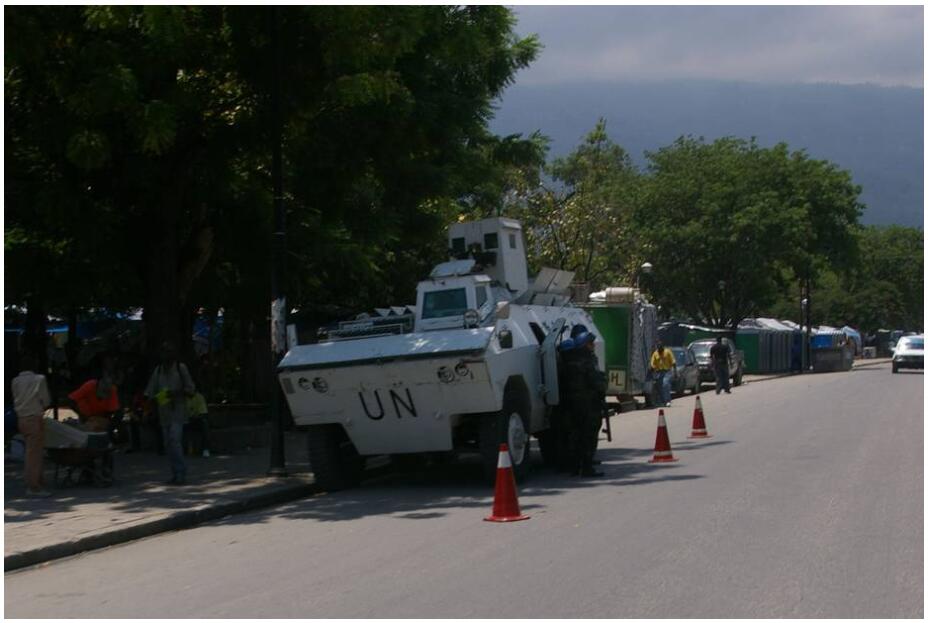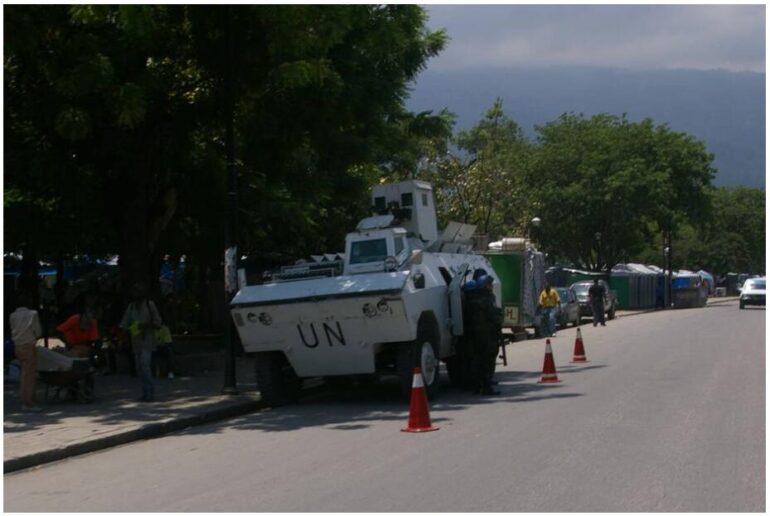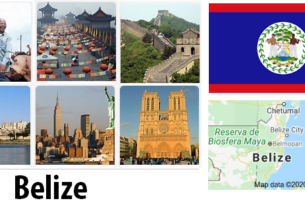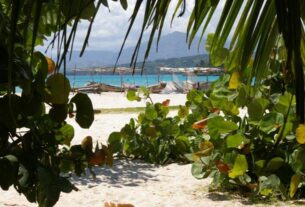On January 12, 2010, the Tiburon Peninsula Haiti was hit by a devastating earthquake. At 4:53 p.m. local time, the earth shook for 52 seconds. The strength of the quake was given by the United States Geological Survey (USGS) with a magnitude of 7.0 on the moment magnitude scale. The epicenter of the quake was about 25 km south of the capital Port-au-Prince near the city of Leogane at a depth of 17 km. The cause is seen in a shift in the Caribbean and North American plates, which meet here. The destructive power of this earthquake is compared by some scientists with that of 35 atomic bombs the strength of the Hiroshima bomb. The extent of the damage was accordingly devastating: Large parts of the capital were razed to the ground. In particular, the city center and the government district around the Champ-de-Mars were badly affected. The finance, education and justice ministries were affected. Furthermore, the parliament building, the post office, the finance and land registry office were completely destroyed. The presidential palace, built between 1914 and 1921, was badly damaged and the central dome of the building slipped. Furthermore, the cathedral and the historic, built by Gustave Eiffel,Marché en Fer in rue Travesière destroyed, which has since been rebuilt by the telecommunications company Digicel. The Christopher Hotel, which served as the administrative and political headquarters of the UN mission in Haiti, was also destroyed. There were 200 victims here, including 4 Germans and Hédi Annabi, the head of mission and head of the United Nations Police Force (UNPOL). The destruction reached from the northwest of Port-au-Prince up to the mountains of Pétionville, stretched through the entire urban area to the south to Petit Goave. Also the coastal town of Jacmel with its arcade houses from the 19th century was badly damaged and could not be reached by land for days because the streets were blocked. Likewise, Petit Goave and Leogane were cut off from the outside world. For days a white cloud of dust lay over the destroyed area. People wandered through the city in search of their loved ones or tried to rescue the survivors or the remains of the deceased from the rubble with their bare hands.
According to areacodesexplorer, Haiti is a country located in Caribbean sea.The balance of the quake is as follows: According to the International Red Cross, 3 million people were directly or indirectly affected by the earthquake, which corresponds to 30% of the total Haitian population. Officially, the UN gives the number of deaths at 225,000; Overall, however, the figures vary between 225,000 and 250,000. Among the dead are 1,300 teachers; There is no information about the number of dead pupils. In addition, a number of high officials and public figures died in the rubble, among them the Archbishop of Port-au-Prince Joseph Serge Miot, the Social Democrat Michel Gaillard and the writer Georges Anglade.
After the quake1.3 million people were homeless and 800,000 of them lived in makeshift camps. 50,000 people moved to rural areas as internal migrants. A total of 97,294 buildings (according to Haitian government) were destroyed, including 4,000 school buildings and more than 50 hospitals and health centers. The material value of the destroyed infrastructure is estimated at $ 4.3 billion. The regional economy suffered losses of an estimated 3.6 billion US dollars due to lost production, job losses and increased production costs. This brings the total damage to 7.9 billion US dollars – which corresponds to the level of GDP in 2009. At the same time, unemployment rose by 8.9%. Economic sectors particularly affected were trade, tourism,
However, the quake did not come without notice. There have been events of this kind in Haiti in the past. The city of Port-au-Prince was completely destroyed by earthquakes twice in 1751 and 1770. Geologists examined the underground faults in 2008 and warned that the tensions that have built up since 1751 could discharge in an earthquake with a magnitude of up to 7.2 on the Richter scale. Another indication of tectonic activities is the rise in the water level of the Etang Saumatre and Lake Enriquillo viewed by two meters since 2008. Just six months before the catastrophe, the Haitian filmmaker and director of the Pétion-Bolivar center in Pétionville, Arnold Antonin, protested with a small group of activists for the establishment of a functioning civil protection system. But nobody took the fears seriously.
Country Overview
Haiti is located on the western part of the Caribbean island of Hispaniola, the eastern half of which is occupied by the Dominican Republic, known as a vacation paradise. With 27,750 km², the area of Haiti roughly corresponds to that of Belgium. Haiti is bordered by the Atlantic Ocean in the north and the Caribbean Sea on the south coast. Jamaica is southwest of Haiti and the Windward Passage separates it from Cuba to the west.
Hispaniola Island lies across the border between the Caribbean and North American plates. This situation repeatedly led to severe earthquakes in the region. The last major earthquake occurred in Haiti on January 12, 2010.




